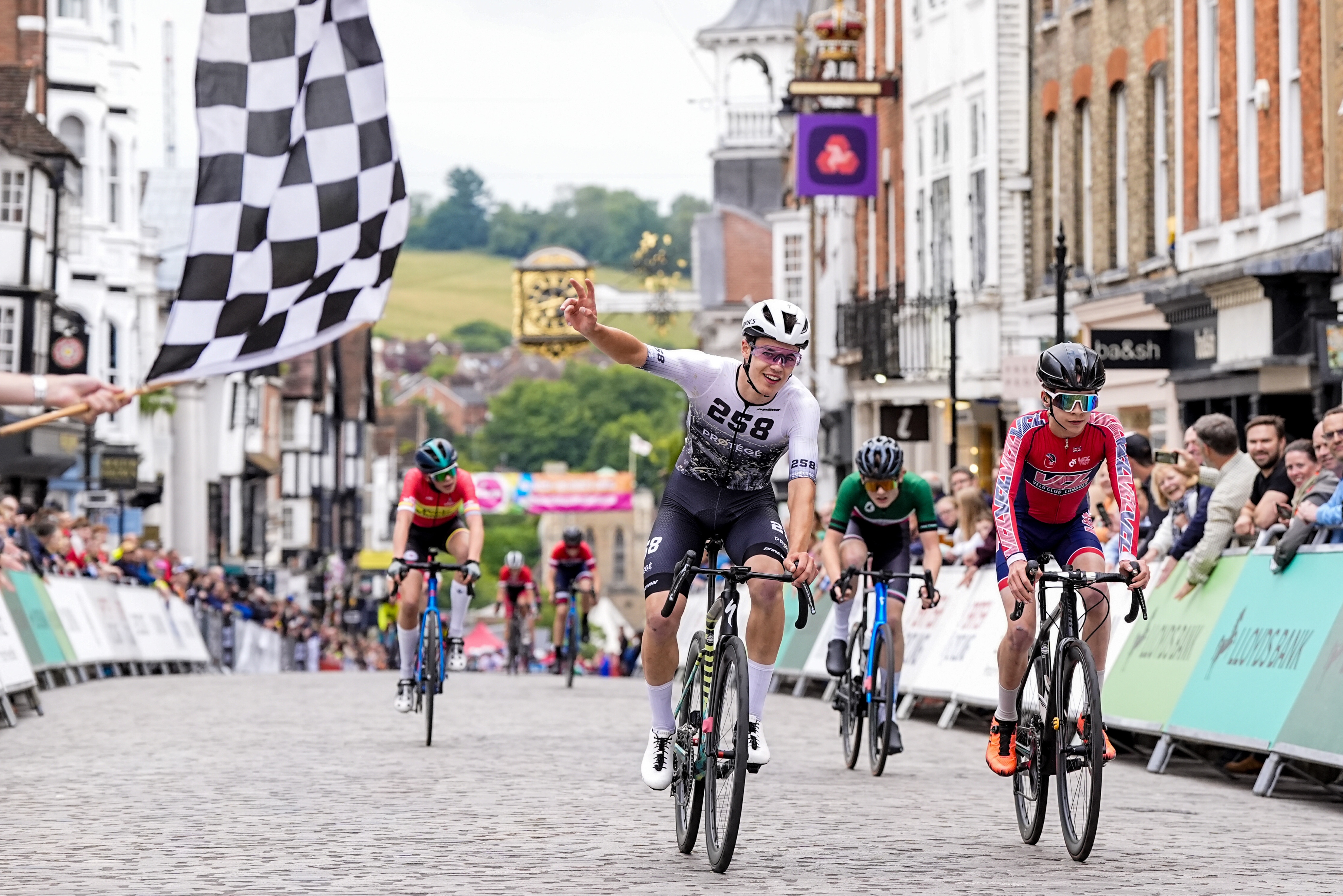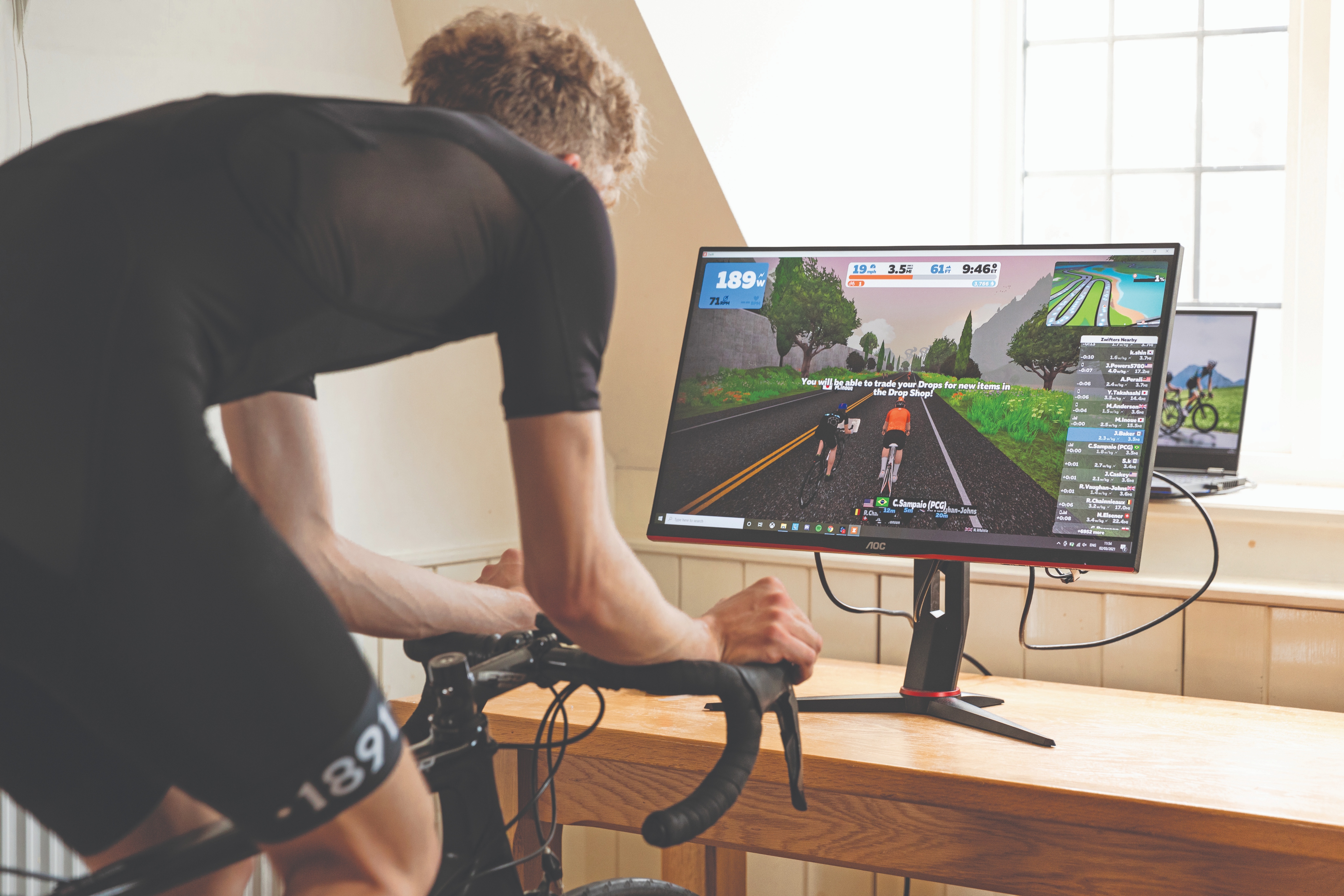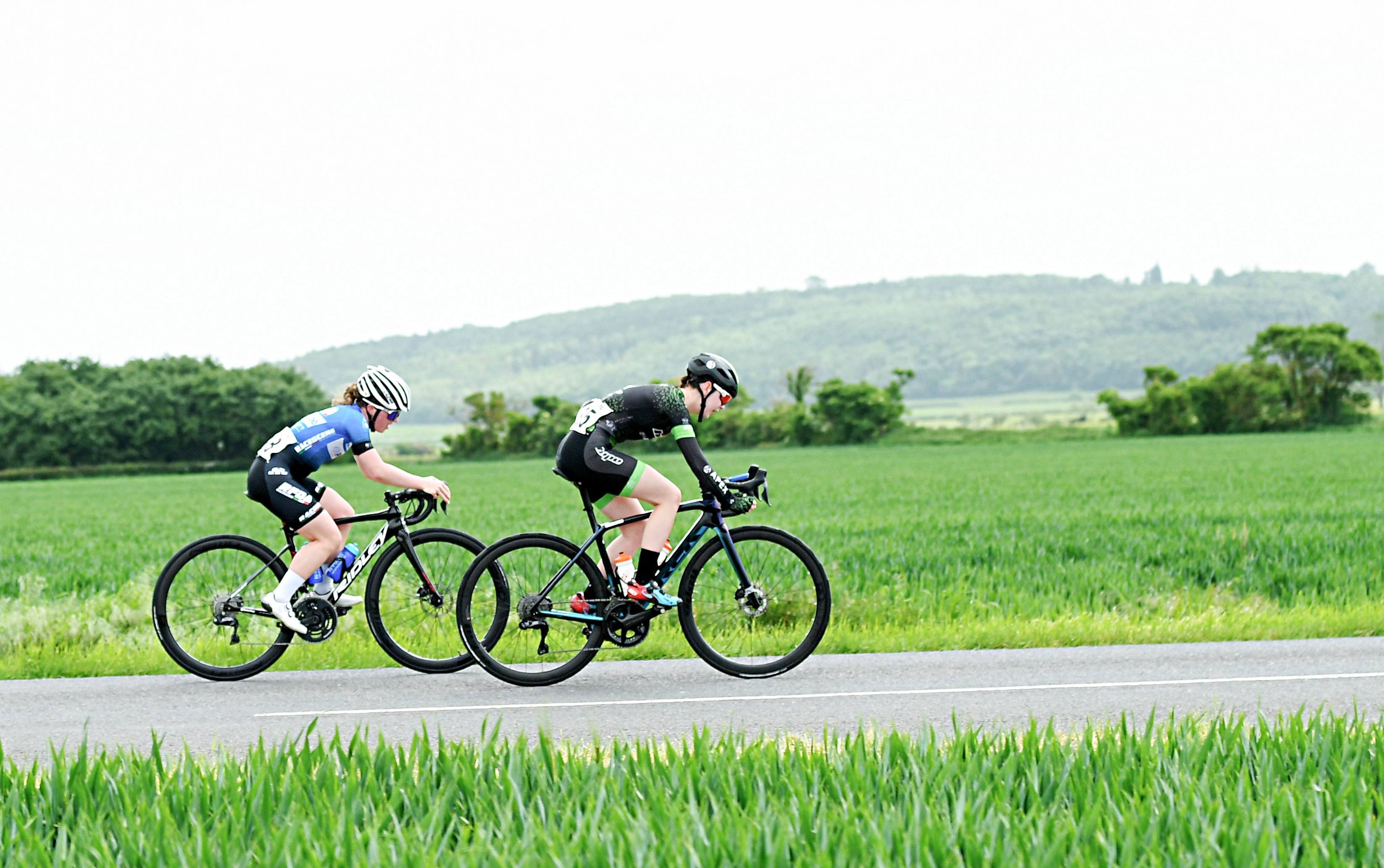The most effective teenage cyclists at the moment are competing with – and even beating – seasoned professionals within the WorldTour, a shift which may lead you to consider at present’s younger champions are coaching tougher, or diff erently, from youngsters of the previous. And also you’d be partly proper. Schoolage cyclists, future stars of the game, now have entry to cutting-edge coaching instruments like energy meters, GPS, biometrics trackers and good trainers – gear their predecessors couldn’t have dreamed of a era in the past. With exact efficiency measurement at their fi ngertips, these younger riders know precisely what they should attain the highest. What’s extra, junior gear restrictions had been abolished in 2023, which means kids now use the identical ratios as the professionals – there’s nothing holding them again.
Distinctive expertise apart, these younger prodigies face the identical limitations and challenges as did cyclists from earlier generations. Puberty and the timing of a kid’s bodily improvement range broadly, and putting an excessive amount of bodily stress on a rising physique can result in problems. Then there are the calls for of every day life: whereas the rising variety of 18-year-old WorldTour professionals can dedicate themselves totally to coaching, their friends making ready for A-levels should juggle lessons, exams and homework – they merely don’t have the time to rack up elite ranges of coaching quantity. So how are at present’s future champions of the game coaching of their junior years? And what ought to these following of their wheel-tracks be seeking to emulate?
Junior sensation

Prime-class expertise Atkins (centre) continues to be at college
(Picture credit score: Olly Hassell/SWpix.com)
Leon Atkins is Britain’s most enjoyable junior rider. The 16-year-old from Hertfordshire [UK] has picked up 11 nationwide titles as a youth rider, set an unofficial world report within the two-kilometre particular person pursuit, and rode a 17.56 10-mile time trial on 15 June 2024, when he was nonetheless simply 15. Tall and well-built – he matured bodily sooner than most of his friends – Atkins comes from the do-everything faculty of thought, enrolling in a calendar of monitor, street, mountain bike and cyclocross. “It may be tough since you by no means actually get an low season and also you’re at all times racing, nevertheless it retains it extra enjoyable and I’ve by no means needed to cease any of the disciplines,” he says.
Atkins, who started racing aged 11, is probably the right case examine: what coaching has he performed to fast-forward the event of his biking health? “Till my first yr as an U16 rider, or youth A, I had no structured coaching,” he says. “I’d journey twice per week for one-and-a-half hours, and at all times for enjoyable.” Final season was his final as a youth rider, and he’s anticipated to dominate the junior ranks in 2025. Already he has elevated his coaching quantity and depth.
“Nonetheless being at college, I’m restricted in how a lot I can do, however sometimes in the summertime I get house from faculty at 4pm and journey for 2 to 3 hours,” he says. “These are at all times base rides, with a number of little brief efforts to sharpen issues. Often I’m doing 4 or 5 regular endurance-focused rides per week, with one race day and one restoration day.” If he’s not racing – a rarity – Atkins does a four- to five-hour weekend journey, and his weekly quantity is normally round 12 hours. “The longest journey I’ve ever performed was 205km, however that was a one-off on a coaching camp,” he provides.
Coached by his father Gavin, a specialist in teaching instruments and knowledge administration on the English Institute of Sport, the 16-year-old shares an instance of a closely loaded coaching week from the tip of June: “I had a two-hour youth race on the Sunday, after which on the Monday I had a two-and-a-half hour monitor session. I did a baseline three-hour journey on the Tuesday, and rode the Otley and Ilkley youth and grownup crits the next two days, so 4 hours racing in whole. I then had a relaxation day adopted by a three-hour journey.” Even for many adults, that may be a tricky week. “It wasn’t a typical week,” Atkins provides a caveat. “As a result of I race a lot, I don’t do intense classes in my coaching,” he says. “I’m not previous; I’ve obtained to maintain my coaching enjoyable and lengthy. Regular driving is what I most get pleasure from and what I’ll do for the subsequent few years. I get all my depth in races and GB monitor camps.”
Motion expertise
As a mother or father or guardian, it’s affordable to fret about juniors doing an excessive amount of too quickly, notably on the subject of power and conditioning work within the gymnasium. There’s irrefutable proof that power coaching helps stop accidents, however when is it secure for a creating athlete to begin lifting heavy weights? What are the rules?
The most recent race content material, interviews, options, opinions and skilled shopping for guides, direct to your inbox!
“Younger folks ought to begin early with creating their physique expertise and physique motion – and that doesn’t imply with weights,” says Robbert de Groot, Visma-Lease a Bike’s head of improvement. “In the event you’re in a position to transfer successfully and with low vitality prices, you’ve got excessive effectivity and that’s very useful.” He’s referring to under-16s. “It’s good for these aged 12 to fifteen to have a sure schooling in motion expertise after which, relying on their charge of bodily maturity, and with skilled steering, resolve when so as to add in weights.” Is there a super age? “Not precisely, nevertheless it’s someplace between 15 and 18,” says de Groot. Atkins conforms to this recommendation, doing one power session every week.
Guided by knowledge

As we speak’s juniors have coaching aids aplenty
(Picture credit score: Future)
One other concern for fogeys is early publicity to coaching devices and knowledge. Purists insist that the main target for children have to be on enjoyment, not efficiency metrics. However Atkins disagrees. “I’ve had a coronary heart charge monitor since I used to be 9 or 10, however I used to be by no means actually that inquisitive about it,” he says. “It was simply to know my baseline, and it’s been good to maintain a monitor of it as I become old. To be sincere, I used it extra as a recreation: look, see how excessive I can get my coronary heart charge!” Aged 11, he acquired his dad’s previous energy meter. “I didn’t use it correctly till a number of years in the past and I didn’t actually know what [power output] was good or not. It wasn’t placed on my bike for efficiency, but when I’m attempting to be one of the best, it helps.”
Now, approaching the elite degree of the game, Atkins pores over his knowledge. “I analyse my TrainingPeaks with my dad, who is kind of good with knowledge, and I get pleasure from it. It’s all about tendencies and checking if issues are going within the flawed or proper path. British Biking have been extra old-school in that regard prior to now, however they’re extra on it now, and not too long ago requested folks on the [junior] Academy to get a Whoop band.”
The mixture of information and expertise provides Atkins a excessive degree of confidence in monitoring his progress. “I’m fairly good at listening to my physique, which for my part is just not too tough,” he says. “You understand how you’re feeling while you get away from bed. I take advantage of an Oura ring [to track sleep and recovery] and mix that with how I really feel, and the way my resting coronary heart charge is trending.” How does he know when he has improved? “On the bike, I take a look at the ability numbers on a gentle journey – they’ve gone up significantly in the previous couple of years. I can do a three-hour journey now at a excessive energy degree and really feel completely nice, whereas a number of years in the past I’d must go to mattress afterwards.”
As he targets extra prestigious races, with a view to attracting the curiosity {of professional} groups, Atkins’s coaching will proceed to extend. “Strava’s end-of-year report confirmed how I’ve steadily elevated my coaching quantity, and I’m seeking to proceed that development till I get to the professional degree,” he says. “It’s not a bounce you make in a single go – it takes six to seven years to transition from a youth rider to a WorldTour rider.”
Coached by Dad

(Picture credit score: Mathew Wells/SWpix.com)
Shibden Hope Tech Apex has been the UK’s standout junior membership group prior to now two years, with their prime alumni Cat Ferguson and Imogen Wolff securing WorldTour contracts on the age of 18 with Movistar and VismaLease a Bike, respectively. At her third professional race, in September, Ferguson received, and some days later clinched each street race and time trial world titles. Lower than per week later, she received once more. Her father Tim is the supervisor of the Shibden group, and the schedule he prescribes to his athletes is much like that outlined by Atkins: 5 to 6 days’ driving, one or two gymnasium classes, and a relaxation day.
The quantity coach Ferguson recommends depends on the size of the races. “An U16 rider’s most race size is one hour, so the coaching quantity [of the longest rides] ought to mirror that, being barely longer – however we’re speaking about twohour rides max, not 4 or 5 hours,” he says. “Once they change into juniors and races change into two to two-and-ahalf-hours lengthy, the amount goes up once more, and once they’re approaching the seniors, with four-hour races, there’s one other step up.” Will increase are incremental, from a median of 10-12- hour coaching weeks as a 16-year-old to 18-20 hours as an 18-year-old. There’s additionally a distinction between the sexes. “Boys’ races are sooner and at a better depth, so they should do extra eff orts in coaching,” Ferguson provides.
Embrace failure

Common classes the place you get a kicking are good psychological and bodily coaching
(Picture credit score: Olly Hassell/SWpix.com)
Each rider who joins Ferguson’s group is given a 15-page handbook that covers coaching, racing and social media utilization, amongst different matters. Ferguson advises his youth athletes to make coaching enjoyable, particular, progressive, constant and be pushed by inside motivation, pointing to his personal daughter’s success. “I by no means needed to inform Cat she needed to race or practice – it’s come from inside and that’s the way it ought to be,” he says. Within the handbook, Ferguson recommends a ‘failure check’: “You’ll want to be doing a daily session the place you get a kicking. This could possibly be a weekly chaingang – are you getting dropped every week (I hope so) or a smash-fest circuit coaching with a bunch of huge, ugly blokes or junior boys making the tempo so quick your legs scream ‘til you get spat out. That is good on a bodily degree and for psychological fortitude too.” The message right here is that whereas most coaching ought to be performed with same-age friends, mixing it with older riders every now and then can elevate efficiency considerably.
Atkins is now making ready for his first season as a junior rider. If he’s going to make all of it the way in which to the WorldTour, what is going to it take? – I’m curious to listen to Ferguson’s take. “Some mother and father come as much as me and ask what the magic recipe is, hoping I’ll inform them they must take a blue or crimson capsule,” says the Yorkshireman, flat-batting my query. “However there is no such thing as a magic reply: it’s about coaching constantly, progressively, and never overtraining.”
YOUNG RIDER DOS AND DON’TS
Robbert de Groot is Visma-Lease a Bike’s head of improvement. Listed here are his golden guidelines for younger riders.
How a lot coaching ought to a junior be doing? “Ten to 12 hours is the common, nevertheless it is dependent upon the person; we see various juniors doing 13-16 hours and their our bodies are OK with that. If they’ll unfold it out to totally different actions, like gymnasium work or working, that additionally works.”
What’s a very powerful ability for a junior to be taught? “The steadiness between coaching and restoration. Perhaps extra coaching is nice, however you may’t practice tougher and relaxation much less. Studying to relaxation and being OK in your thoughts with taking a better day is a studying course of as a result of kids are so filled with vitality. It’s the restoration from coaching that produces a excessive improvement response, not the coaching itself.”
What ought to juniors deal with? “Consuming extra! Particularly on the bike, as a result of they’re inclined to extend the quantity and depth of biking whereas forgetting additionally they have to eat extra. We see 9 out of 10 juniors under-fuelling as a result of they don’t have the information about food regimen.”
Ought to juniors weigh their meals? “I’m fairly towards this at an early age. The main target ought to be on having a basic information of what meals is wholesome, what the physique wants, and an understanding of how a lot it could want for the period and depth of the exercise.”
